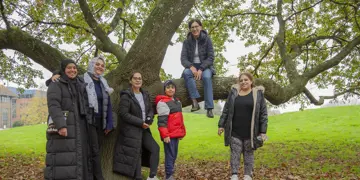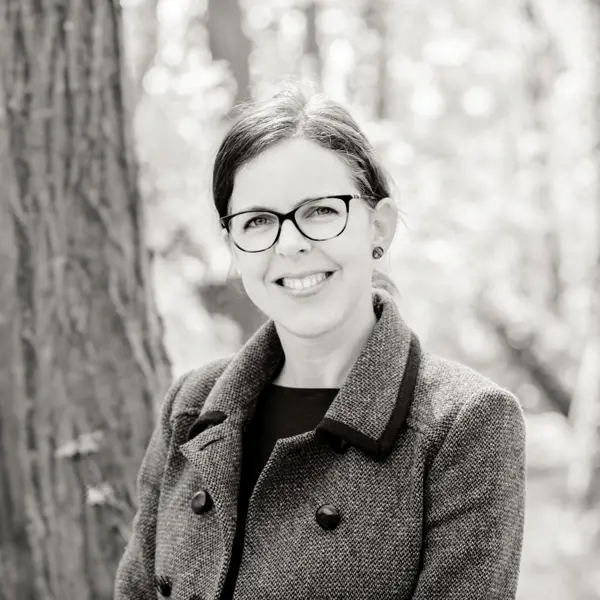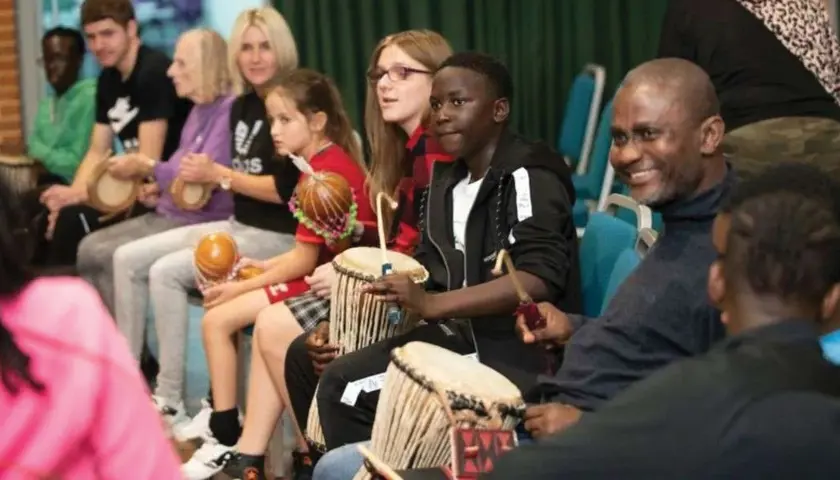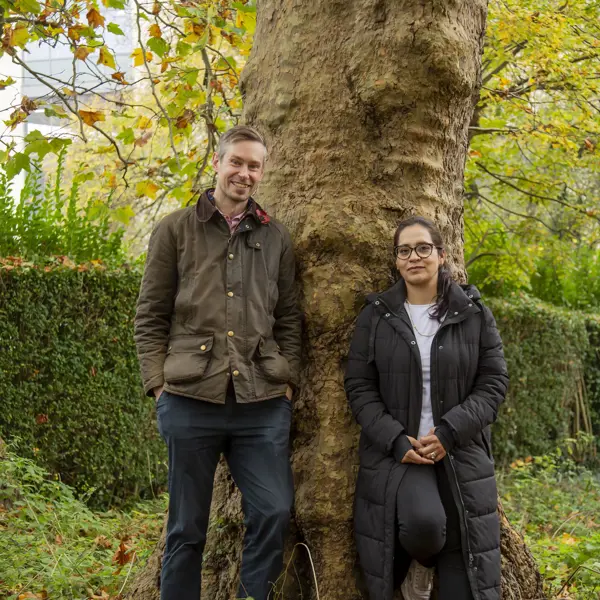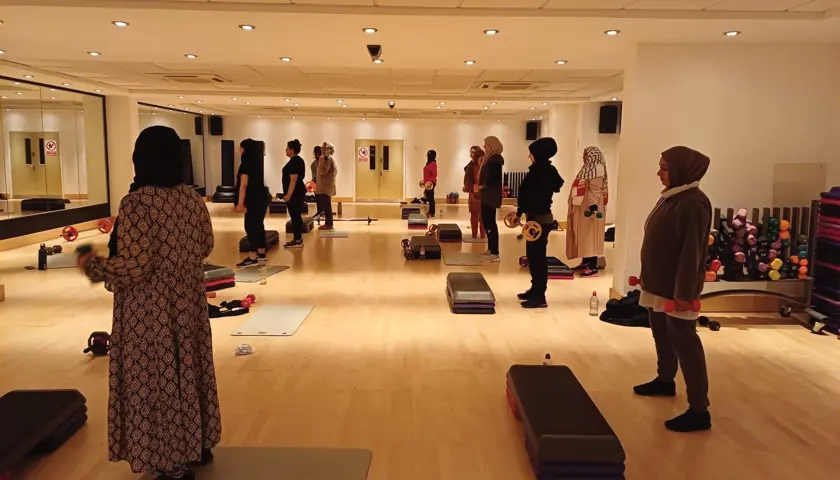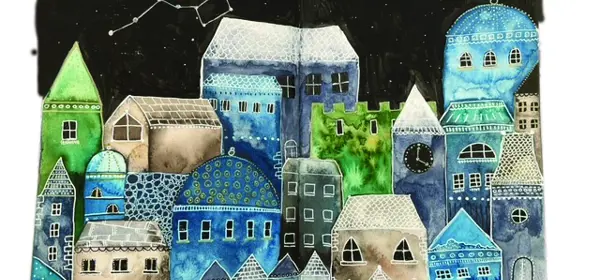In it together: preventive healthcare initiatives
In it together: preventive healthcare initiatives
Through community projects designed to nip health issues in the bud, GPs are aiming to give the power – and responsibility – for good health back to their patients
What do a citizen-science water project and a walking group for South Asian women have in common?
They’re part of a small, quiet revolution in primary care taking root across east Surrey. Its aim: to redefine healthcare, locally at least.
It is spreading like mycelium, through an ever-growing network of social connections and often unlikely relationships. And it is spawning community allotments and orchards, exercise classes, support groups, even a football club.
Quite what these initiatives do for participants’ health is not always easy to explain, harder still to measure. Yet, people are adamant they feel better for ‘being part of something’; some are even going to their GPs less often.
All these projects have been supported by GHT (Growing Health Together), a collaboration between GPs, local organisations and community members to ‘build health from the ground up’.
Creating health is all about shifting power
Dr Orrow
Or as its co-founder and director, GP Gillian Orrow, puts it, it’s about ‘creating conditions for health to flourish’, not just preventing ill health. It’s also about making the NHS more sustainable, both environmentally and financially, she says.
As the Government tries to shift the dial away from reactive care, could the work of Dr Orrow and colleagues hold some useful lessons?
The wider ecosystem
At first glance it’s an unlikely example of preventive health but River Mole River Watch is the very definition of tackling problems upstream.
Volunteers in the group’s citizen-science project have been monitoring water quality for more than a year, and gathered evidence of how sewage seeping from a Horley treatment plant was contaminating the river, footpaths and a housing estate.
Not only have the group won national media coverage about a very real threat to their physical and mental health, they’ve also gained a sense of purpose, camaraderie, exercise and closer ties with nature. All these things help create health, says Dr Orrow, who has been involved with the project from its outset.
Research shows that lifestyle, income, education, employment, social relationships, and the built and natural environment together have far greater bearing on health outcomes than healthcare.
‘Every part of this ecosystem contributes to and benefits from the health of the whole,’ says Dr Orrow. ‘So the underpinning vision behind GHT is about co-creating conditions in a community where everybody can be encouraged and enabled to contribute to the communal health and wellbeing of the local area.’
GPs often lend their support to kickstart and establish a project, and GHT might provide mentoring, physical space, connections or seed funding – £100 for a water-quality tester in the case of River Mole River Watch. But the initiative and drive lie with the community.
Of the many ideas which have sprung out of GHT, those that work best are conceived and led by people at the heart of the community who understand local need, whether that is a space to chat or a plot to grow vegetables.
One initiative Dr Orrow has been closely involved with is an African diaspora community group. Through cultural events and food, members now have a strong sense of belonging – and access to areas previously considered ‘white spaces’, whether parks, food banks or health settings.
‘Community members, particularly those who’ve been underserved by statutory services in the past, know much better than we do what the gaps are,’ she says. ‘Creating health is all about shifting power.’
[It’s] about co-creating conditions in a community where everybody can be encouraged to contribute to the wellbeing of the local area
Dr Orrow
It’s about shifting responsibility too. Before 2019, when the first expression of GHT was born, Dr Orrow had been growing increasingly exasperated at the burden of easily preventable disease she was seeing in the GP surgery. An academic clinical fellowship based at Cambridge’s Institute of Public Health, and previous work with NICE (National Institute for Health and Care Excellence) on issues such as preventing dementia and frailty, fed into this frustration.
‘When I talked to patients about lifestyle approaches to improve health and wellbeing, they’d constantly explain what the barriers were: “I can’t afford the gym. I don’t know anyone.” I was hearing these barriers again and again.’ But Dr Orrow didn’t blame her patients but rather ‘structural barriers’. Health professionals too have encouraged the public’s over-dependence on them, however unwittingly, she believes; it’s now vital doctors make the case, provide the evidence, that ‘health starts at home’.
Removing barriers
Five miles away in Redhill, a group of older women from the South Asian community can be seen walking laps of the Memorial Park – before heading into a local café for a cuppa. Their hijabs and cultural values make ordinary gym membership inaccessible to them: this is their club.
Among the regulars is Uzma Aziz, a local GP for whom this walking group is the answer to the same kind of frustrations Dr Orrow had been feeling.
Over the years, she had noticed that many patients from her own South Asian community were presenting with pre-diabetes, hypertension and mild obesity in their early 40s.
‘Ten minutes in the consultation wasn’t enough time to address all this, especially when people have very fixed cultural beliefs in the way they live,’ says Dr Aziz. ‘It takes a complete change in lifestyle. I thought maybe we could attract them somewhere they wanted to socialise and take that opportunity to address some of these areas.’
The walking group, which Dr Aziz set up with a community development worker, soon led to a ‘legs, bums and tums’ class and swimming lessons for some of the younger women. There is talk of adult tricycles in the Memorial Park next.
Through links with other local partners and not-for-profits, these groups have blossomed into the AWWH (Asian Women Wellness Hub). As well as exercise, AWWH has offered screening and health checks, healthy-eating workshops, information sessions about palliative care, even art and craft activities. There are now more than 100 women on its WhatsApp group.
GHT has been funded by NHS Surrey Heartlands since 2020. None of the initiatives it’s involved with has required large injections of money: it cost £20 to set up the walking group for about 10 women but already some are now socialising and exercising outside it too.
Dr Aziz gives a fair bit of her own time to AWWH: she’s only funded for four hours a week with GHT. But she enjoys the women’s company and is gaining their trust.
‘When you connect with people at the same level, they’re more likely to tell you the challenges they’re facing, without thinking you’re going to be judgmental. It’s not about hierarchy: you’re removing barriers.’
‘Nature-based solutions’
One of the reasons the AWWH walking group is so successful, Dr Aziz suspects, is that it reconnects the women with nature.
‘These are mostly working-class women who came to the UK in the ’60s and ’70s,’ she says. ‘They used to live in villages, they would grow their own food. Here, they’ve been living in council flats and small accommodation, with too many people under one roof. Nature brings back memories for them.’
Many of the GHT initiatives, in fact, are about taking people back into nature. Central to its vision is the belief that human health is indivisible from nature’s. Dr Orrow is fascinated by the parallels between biodiversity loss in nature and similar erosions in biodiversity of the human microbiome in industrialised nations, for example.
Perhaps not surprisingly, the seven GPs who have protected time for GHT work now think twice about prescribing medication as a first resort.
Merstham and Redhill GP Ivan Anderson stresses that, for many, medicine is vital and life-changing but he is passionate about exploring whether, for some, ‘nature-based solutions’ could be a better option.
From helping with sense-making to sleep patterns, mindfulness to microbiome boosts, nature is a ‘huge untapped resource for health’, he says.
When you connect with people at the same level, they’re more likely to tell you the challenges they’re facing
Dr Aziz
More than a year ago, before he joined GHT, Dr Anderson and the patient champions at his Redhill practice set up a walking group which meets at the surgery every Wednesday morning, whatever the weather. It’s been a roaring success.
‘Maybe having a healthcare professional involved and starting at the surgery gives it credibility,’ says Dr Anderson, ‘but some patients turn up every single week. Some come for the exercise but some have found friendship through the walks.
‘You could go to a gym and walk on a treadmill but the important bit is that connection with nature and others. I’ve always found nature very healing: it helps me regulate myself.’
Among other initiatives, Dr Anderson has helped plant a community orchard and is now piloting nature-based wellbeing sessions for surgery staff.
He is also now applying some of the lessons learnt from GHT in his clinics, recently starting 90-minute group consultations for patients with high blood pressure.
‘I enjoy all of my job but the nature-based and health-creation work has kept the passion for general practice going,’ he says. ‘It sometimes feels like you’re making a bigger difference when you’re involved with communities. There’s power in groups.’
GHT is part of a wider push towards integrated primary care in East Surrey in response to the Fuller Stocktake report. A key commitment for East Surrey Alliance is listening to local citizens’ needs and reflecting these in decision-making about how health services develop.
To this end, GHT has already catalysed ‘health and wellbeing networks’ bringing together staff from GP practices, community partners and patients. The local GP Federation and primary care networks have been core to GHT’s success. It is showing other promising signs, too.
Feedback from the South Asian women of Redhill includes moving testimonies such as: ‘I felt alive after a long winter hibernation.’ A woman who took a neighbour to an exercise class for older people in Smallfield said: ‘She hadn’t been out of the house for years and was lonely and down... Now she comes every week and has even joined the craft group too.’
In a sample of 13 members of that same exercise class, 61.5 per cent have sought fewer GP appointments since 2023, which equates to a 22 per cent reduction or 36 appointments overall.
Participants’ blood pressure, weight, BMI and blood glucose levels also declined.
The GPs involved in GHT are under no illusion: this is no quick fix, says Dr Aziz.
‘This is not an antibiotic which will show a result in 48 hours. If you have educated a younger mother on how to feed her kids, you’re not going to see the result in a month, even years, but you are going to see a healthy adult with good eating habits. You’re planting seeds.’
It is, however, making doctors feel more optimistic about their work. For Dr Anderson, his GHT time is the ‘highlight of the week’ because he sees patients being empowered to take control of their health.
Dr Aziz feels the same. She has been able to refer an older, recently widowed patient to the Smallfield exercise class; it reminded her how helpless she had felt previously at not having anything practical to offer a woman in a very similar position.
‘With all the constraints and challenges of the NHS, we need to do things differently,’ she says.
Dr Orrow is aware that rethinking primary care may be daunting for many GPs and seems ‘a million miles away’ from their current reality. But she insists ‘primary care has a really exciting role to play’ in health creation.
‘My advice is to focus on relationships and talk to colleagues about the art of the possible. Start small, and go where the energy is.’
(Credit: [main image] Emma Brown)


